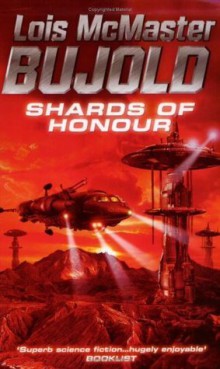Our lives are made to be laid down. Some of us will die for no reason, or because it is our time. Some of us will die for good reasons, and some of us in the service of lost causes.
I can believe that Serg’s honor guard to hell laid down their lives for a good cause. Their lives, and whatever lives were earlier sacrifices to Serg’s sins, were the cost—as Cordelia said, “something you give, not something you get”—of preventing something worse. So I am compelled to believe that the Escobarans who were killed in action also died for a good cause, though not one that anyone on Escobar knowingly chose.
And once your life has spilled out into the vast emptiness of space, then what happens?
Rudyard Kipling addressed this question as best he could, given that space exploration was not a realistic military consideration in his time:
When you’re wounded and left on Afghanistan’s plains
And the women come out to cut up what remains
Jest roll to your rifle and blow out your brains
An’ go to your Gawd like a soldier.
I’ve thought about Kipling’s advice a lot in the last few weeks, as Bujold has grappled with the themes of sacrifice and costs. I think Kipling might have offered some comfort to Aral and Bothari in their darkest moments, although that would have left us with a much shorter story.
Hard vacuum renders blowing out your brains both impractical and unnecessary; Salvage still goes on. I assume that this work would be done by someone whose union has negotiated a very generous pension plan. What I assume doesn’t matter, but the idea of assumptions is central to “Aftermaths.” When Pilot Officer Ferrell looks at Medtech Boni, he doesn’t see a person; He sees a collection of five-year service chevrons. He doesn’t see people when he looks at corpses either. He sees decompression. Ferrell is not a villain, he’s just young. He’s uncomfortable with death, and with Medtech Boni. He’s much more comfortable with his assumptions.
“Aftermaths” deals with four corpses. The first two are men. Boni’s DNA scans and records database identify them, but she rifles through their pockets for clues to their lives and personalities. Boni compares this to looking in someone’s bathroom cupboards—it’s invasive and self-indulgent. It reminded me of Ewen Montagu’s description of loading “William Martin’s” pockets during Operation Mincemeat in World War Two. As part of the planning for the invasion of Sicily, the British Special Operations Executive created a deception plan that revolved around a corpse of a British Marine set adrift off the coast of Spain with the plans for an invasion of Sardinia in a briefcase chained to his belt. Martin’s identity lived only in the pocket litter the SOE provided for him—letters, a photograph, and ticket stubs that invented a dashing and careless young officer. Boni works this process in reverse, assembling identities from the pocket litter left behind. The first salvaged corpse, Lieutenant Marco Deleo, was a conscientious family man from Escobar. Our second corpse is Aristede Vorkalloner.
Aristede was Aral’s second officer on the General Vorkraft. Aral excluded him from the battle order when he planned to storm engineering during the mutiny. He died when Gottyan dropped his shields to concentrate fire on the Escobaran forces; he’s a plasma mirror casualty. Boni tells us what he carried—a charm containing his mother’s tears and a lock of her hair, commemorating her death. Aristede’s mother did not live to see her son sacrificed to a failure of politics. Decompression has twisted Aristede’s face into a snarl. It bothers me—he was young and earnest, and I don’t want to remember him looking cruel, even in death. Boni massages it out.
The third corpse is a woman. Boni treats her with more than the usual care. Ferrell is confused, and then disgusted, when Boni dresses the woman in a wedding dress and kisses her. This is the moment that Ferrell realizes that Boni is something other than his assumptions. His first step away from the comfort of what he expects is a step in the wrong direction; he accuses her of being a lesbian necrophiliac. To his credit, he doesn’t waste a lot of time on disgust. When Boni doesn’t run the corpse’s retina print and DNA through the database, Ferrell realizes that she is Medtech Boni’s daughter. Boni isn’t just searching for corpses, she asked to be assigned to this sector in the hope that she could bring her daughter home.
Boni’s decision to dress her daughter in a wedding dress feels intrusive to me. She’s imposing a mother’s dream over a daughter’s identity. Although I’ve only known these characters for the space of a few pages, it seems out of place for Boni to turn her daughter into a symbol of romantic hope when she was so careful to look for clues to Vorkalloner and Deleo’s true selves. Medtech Boni’s desire to transform her daughter is a mirror of Cordelia’s mother’s decision to consent to treatment against Cordelia’s will. Both mothers are struggling to understand what war has done to their children. Cordelia’s mother has the hope of one day knowing, and I’m grateful to know that she and Cordelia will eventually reconcile. Medtech Boni has no such hope. I can see that Boni is trying to shut out the horrors of war with a more attractive fantasy. I can also see that it is only a fantasy; Boni doesn’t mention Sylva’s fiance.
The fourth corpse is a Barrayaran, spinning in the debris field with his guts hanging out. Ferrell’s completes his personal trajectory from seeing symbols to seeing people by offering to help with this one. Bujold ends the story there, without revealing the corpse’s identity. She doesn’t need to—it’s Prince Serg. Just like Aral did at Yuri’s execution, someone has taken their first cut out of his stomach.
Ellen Cheeseman-Meyer teaches history and reads a lot.










